In video editing, animation gives creativity to transform objects into dynamism. It incorporates motion into text, logos, and nearly any other feature. When it comes to keyframe animation, you have many options to start from. It helps you to create eye-catching commercial videos that have an impact.
This powerful feature of Filmora has made it easier than ever before. You can use this video editing
software on Mac as well as on Windows. Its keyframing technique enables you to create attractive animated motion that enriches content. It promotes creative storytelling by developing your video editing abilities. Getting expertise in Filmora will open up a world of artistic possibilities.
This article will discuss how to animate text and logos with keyframe animation in Filmora.
Part 1: Why Animate Text and Logos in Filmora
Wondershare Filmora keyframe is a method used for animation. It detects important points or “frames” inside the video. These points represent the start and end of a specific action or transition. Keyframes in Filmora ensure an easy adjustment from one keyframe to the next.
It enables flexible easing choices for organic motion and precise command over the duration and timing of animations. Also, countless creative methods exist to animate shapes, text, logos, and more. You can reach new heights by using Filmora’s keyframe animation.

Your audience will be captivated if you master this technique. A professional touch will be added to your videos, making a huge impact. You can convey and maintain viewers’ attention throughout with these stunning animations.
Reasons for Animating Text and Logos with Filmora
Filmora’s capabilities make it suitable for both beginners and advanced editors. Here’s why animating text and logos in Filmora is a good decision.
- Custom Animations: It allows you to customize your text and logos. You can quickly move, grow, rotate, and change the opacity of your text and logos. This will enable you to build personalized animations for your project’s style.
- Multi-platform: Filmora is compatible with Mac and Windows, making it the perfect choice for editors.
- Professional results: Despite its ease of use, Filmora produces high-quality animations. It can make your videos appear excellent and engaging.
- Adjusting the Object’s Opacity: The term “opacity” describes an object’s level of transparency. The 100% opacity indicates no transparency. At the same time, lower percentages allow some information underneath to be visible. Filmora’s keyframes can change the opacity, allowing fade-ins and outs. It is perfect for scene changes, movie titles, and graphics. It gives your animations a sleek, expert look.
- Filmora Makes Keyframe Effects Easy: It is popular among millions of users. It is the best tool If you want to create animations while saving many hours of editing. You can create stunning animations with shortcuts and powerful editing features.
- Correct Animation Control: It has spatial interpolation and temporal interpolation. Spatial interpolation controls an object’s movement between keyframes. You can shape an object across the screen by creating straight, curved motion paths. Temporal interpolation regulates an animation’s speed. By using it, you can change the timing in the Filmora keyframe.
Part 2. How to Animate Text Using Keyframes
As the name suggests, text animation includes moving words, letters, or paragraphs. They travel across the screen, occupy a specific region, or follow a particular pattern. It can attract readers and grab attention to crucial details, such as a brief advertisement or quotation. Additionally, it makes the message easier for viewers to recall.
Step-by-Step Guide
Step 1: Upload the Media Files
Open Filmora, then add the files you wish to edit.
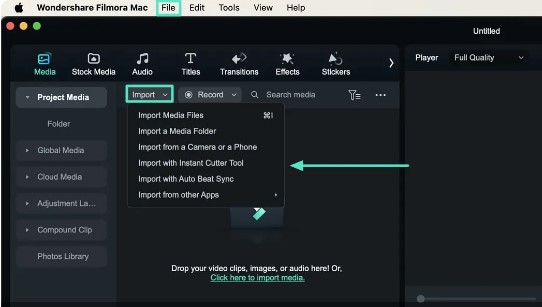
Step 2: Add Text to the Video
Now, drag the files into the timeline. After that, choose text in the timeline bar to add text to the video. You can also animate text using effects and text animation, but here we will go for keyframe animation.

Step 3: Turn On the Keyframe Option
Now, click on the text in the video. Next, go to the video tab and turn on the keyframe option.
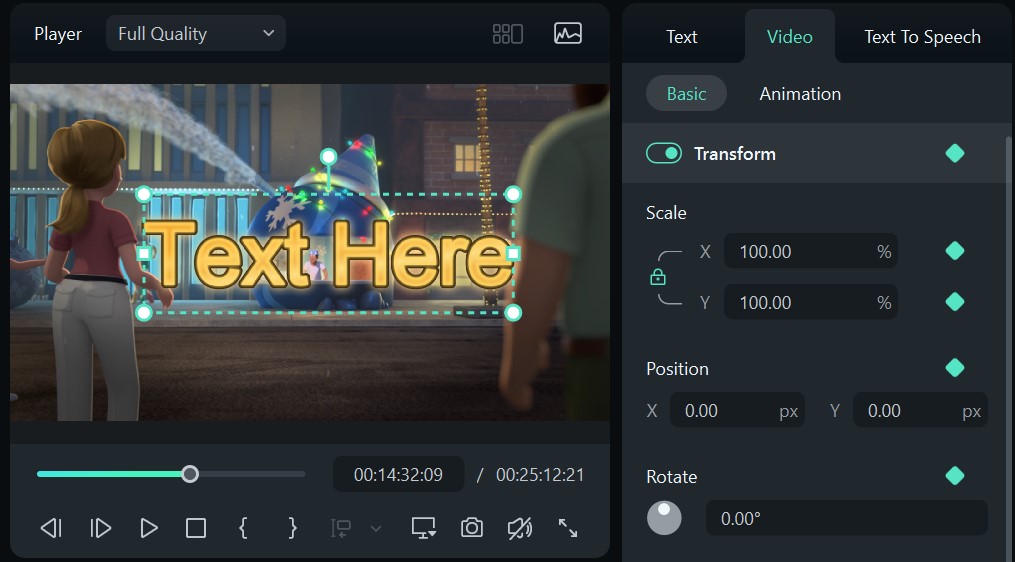
Step 4: Animating the Text
You can animate the text as you want with keyframe animation. If you’re going to rotate the text, just turn the option on and give the value of how much you want to rotate the text.
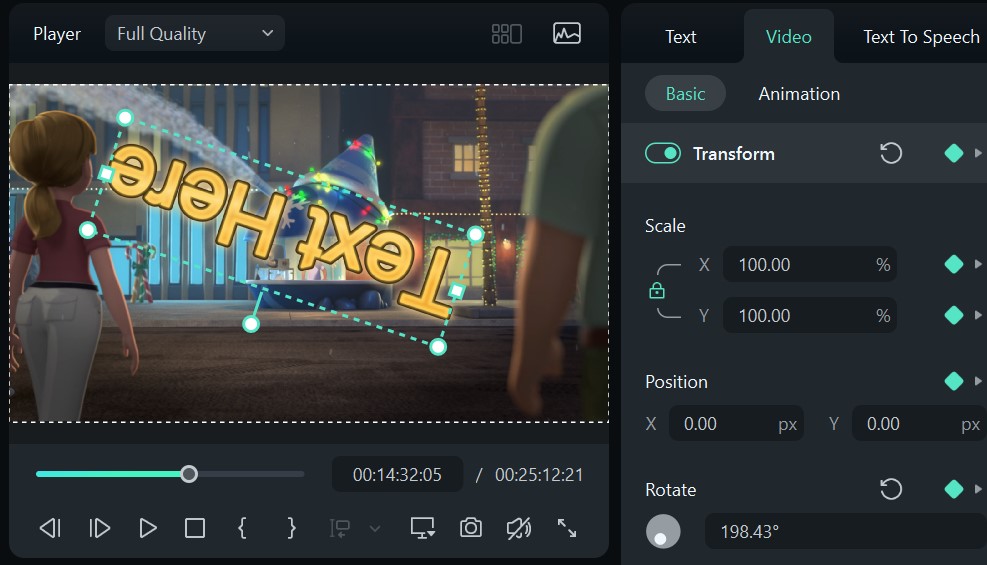
Part 3. How to Animate Logos Using Keyframes
Filmora’s will transform how your brand appears and communicates online. Using Filmora’s effective UI, you can design an animated logo that captures the essence of a brand. Creating an animated logo is critical for a business owner in today’s business world. Through successful marketing, develop a relationship with your audience that will continue. Increase brand recognition and set yourself apart with a powerful logo.
Step-by-Step Guide
Here are the step-by-step methods of animating logos using keyframes.
Step 1: Import the Files
First, import the video file and a logo you want to add and animate in your video. After that, drag them into the timeline.
Step 2: Turn the Keyframe Option On
Go to the video tab, select the transform option, and turn it on.
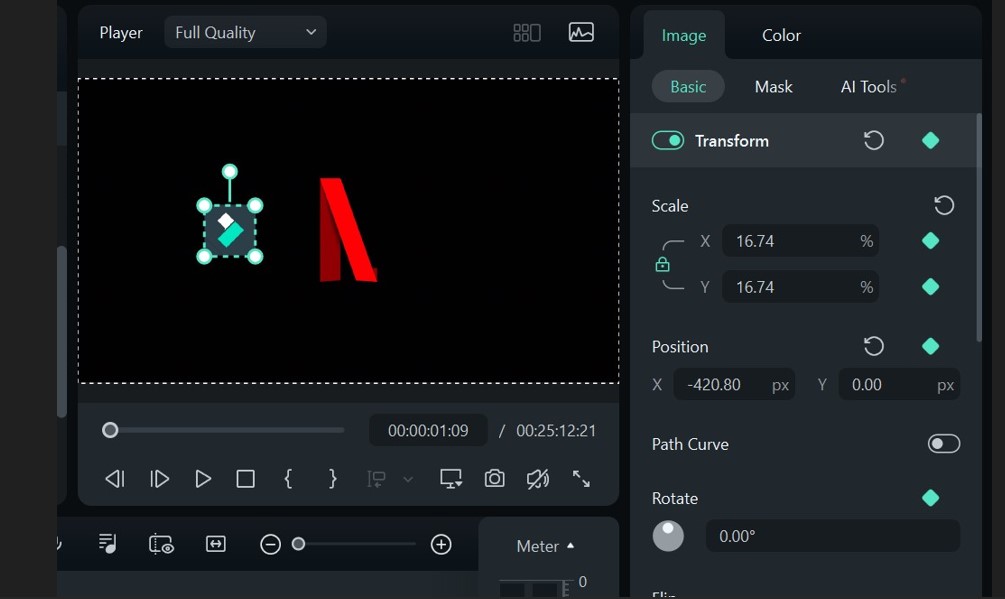
Step 3: Animating the Logo
You can turn on the path curve and then move the logo in the media player how you want it to.
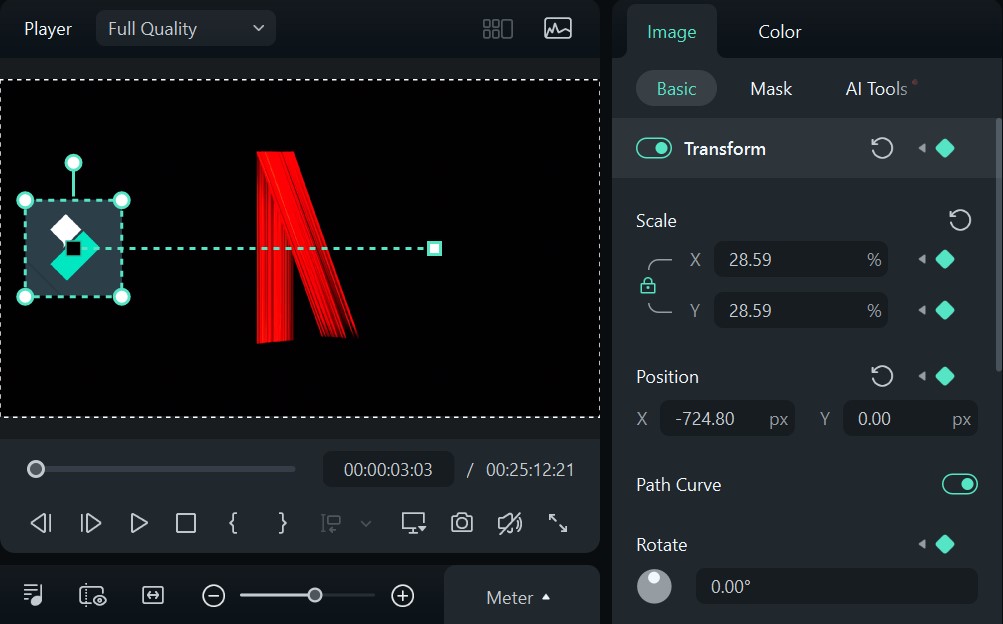
Step 4: Export the Video
Click on the export button to save the video.

Conclusion
Wondershare Filmora allows you to animate text and logos using keyframes. It has quickly become a favorite tool among different users.
Filmora includes an extensive library of specified styles for text animation. Keyframing allows organic movement and specific control throughout animations.
A keyframe can change values for parameters such as objects and rotation in text. You can make a logo move using multiple methods alongside this tool. You can try Filmora to discover the secrets of keyframe animation and improve your skills.
Meet Ry, “TechGuru,” a 36-year-old technology enthusiast with a deep passion for tech innovations. With extensive experience, he specializes in gaming hardware and software, and has expertise in gadgets, custom PCs, and audio.
Besides writing about tech and reviewing new products, he enjoys traveling, hiking, and photography. Committed to keeping up with the latest industry trends, he aims to guide readers in making informed tech decisions.

